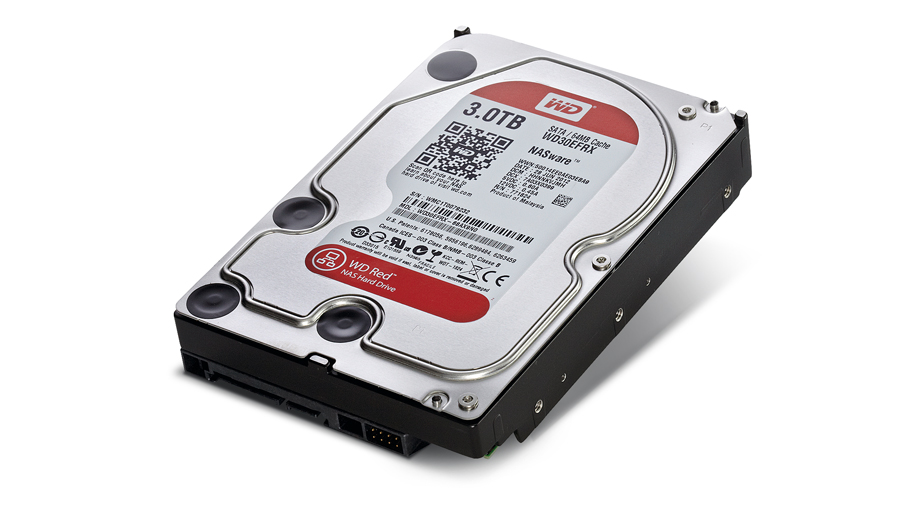TechRadar Verdict
Pros
- +
Good features
- +
Should prove more reliable than desktop drives
- +
Improved power management
Cons
- -
Single drive performance better than RAID
Why you can trust TechRadar
Western Digital has had a bit of a rethink about how it brands its drives, and has shown the Scorpio (mobile) and Caviar (desktop) names the door. Instead, the company is now relying on just colours, which previously only indicated which market segment each product was aimed at.
For example, the Scorpio Black and Scorpio Blue ranges are now Black (performance/enthusiast) and Blue (mainstream/everyday), while the Caviar Green range of eco-friendly drives is now badged as just Green.
Into this kaleidoscope of colours comes WD's new range of drives aimed at small office and home (SOHO) NAS users - the Reds.
The Red range is currently made up of three drives in 1TB (WD10EFRX), 2TB (WD20EFRX) and 3TB (WD30ERFX) capacities. The idea of the Red range is to provide low cost drives for use in NAS environments as an alternative to standard desktop drives in RAID arrays.
Those setups can be a source of frustration and lost data, as desktop HDDs often struggle to cope with the demands of such environments.
Intellipower
This range takes the power-saving Intellipower spindle technology of the Green series and marries it with some of the 24/7 robustness of the RE-4 enterprise drives. WD has also added 3D Active Balancing, and a new technology called NASware in the firmware.
3D Active Balancing eliminates vibration by tuning the drive, which in turn boosts its reliability and performance. NASware comprises a bunch of technologies aimed at keeping the drive(s) from dropping off a RAID array through extended error recovery, while also offering improved power management.
Benchmarks
WD sent us a pair of 2TB drives, so after testing one on its own we built them into RAID 0 (striped) and RAID 1 (mirrored) arrays and timed how long to transfer a 4GB photo file. Strangely, the single drive performance was actually a little better.
Sequential read performance
ATTO: Megabytes per second: Faster is better
WD Red 2TB: 127
WD RE-4 2TB: 130
WD Green 2TB: 93
Sequential write performance
ATTO: Megabytes per second: Faster is better
WD Red 2TB: 111
WD RE-4 2TB: 96
WD Green 2TB: 85
Application performance
4GB Photo copy: Seconds: Lower is better
WD Red 2TB Single drive: 86
2x WD Red 2TB RAID 0 (Striped): 87
2x WD Red 2TB RAID 1 (Mirror): 88
Internally the Red range of drives use 1TB platters, Marvell controllers and uprated 64MB DDR2 caches. Before the Red range appeared, if you were building your own one- to six-bay NAS device, your only choices were either standard desktop drives or much more expensive (but robust) enterprise drives.
While the Reds don't offer the same range of protection as WD's enterprise-focused RE drives, they are more resilient than a standard desktop HDD, and are competitively priced. Our review model, the 2TB version, costs around £100. The equivalent Green desktop drive costs around £90, while a 2TB RE4 model will cost some £70 more than the Red version.
WD has also set up a dedicated 24/7 support line exclusively for Red users, and is backing the drive with a three-year warranty. The problem with using standard desktop drives in a RAID environment is that they often drop out of the array.
Until the arrival of the Red series, the only real way to ensure your drives were up to the job was to buy expensive server drives. WD gets the thumbs up for working with QNAP, Synology and other NAS providers to make sure the range is compatible with as many products as possible.
As it says on the drive, this is perfect for the nascent home NAS generation, and as SSD prices drop, the future of the humble hard disk is large scale storage alone.
